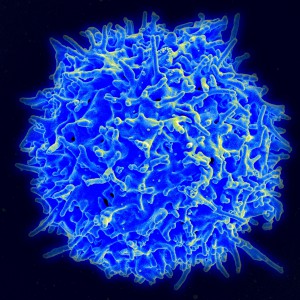Breast Cancer Research
When Dr. Susan Love, author of The Breast Book, writes about recent research she’s learned, breast cancer bloggers take notice. Dr. Love’s recent report on research at the American Association of Cancer Research 2014 is one example. In her post she notes that research is moving toward finding ways to add to the personalized or precision medicine cancer treatments that are now available.
What are Precision or Personalized Treatments?
Before going forward, let’s define this terminology. Personalized or precision medicine treatments are based on the Tumor Genome Atlas Project (TCGA) a major research undertaking sponsored by the National Cancer Institutes to map the DNA mutations of cancers. By mapping the cancer, researchers have found treatments that block the gene or interfere with the proteins the gene creates and stop cancer pathways. This has been a powerful tool for cancer treatment.
One Issue in Preventing Recurrence of Breast Cancer is Tricky Cells
Dr. Love notes that
The unofficial theme of this meeting seemed to be “too many targets,” (i.e., pathways or mutations)! This doesn’t mean that researchers will abandon this approach entirely but rather, that it is now clear that we are going to need more than “Precision Medicine” to eliminate cancer.
Cancer cells are tricky. Many cancer treatments target pathways…these are the pathways that lead to cell growth, cell reproduction and survival. The problem is that cancer cells will adapt, finding other pathways to grow and reproduce. That is one reason why sometimes treatments fail or cancer spreads (metastasizes).
So What Other Research Is Happening? Enter the Immune System
 According to Dr. Love, researchers are focusing on another trick of cancer cells–their impact on the immune system.
According to Dr. Love, researchers are focusing on another trick of cancer cells–their impact on the immune system.
Some cancer cells can turn off the body’s natural defense against cancer and invaders like viruses and bacteria. Our body’s cells grow and divide all the time and usually, if there is a mistake in the division or a wanky cell is produced, our immune system takes care of it. Tricky cancer cells get in the way of this natural defense, allowing mistakes to spread and cancer to grow.
T-cells are important defense cells in our immune system. These cells are able to identify, attack, release cell toxic molecules (called cytotoxic) and engulf or “eat” cells that are infected with viruses, bacteria or have mistakes like cancer cells. The way T-cells identify or figure out which cells to destroy or what is “foreign” is through substances called peptides (a type of protein) that is present on the cell surface. Tricky cancer cells turn off the T-cells so that they don’t do their job.
release cell toxic molecules (called cytotoxic) and engulf or “eat” cells that are infected with viruses, bacteria or have mistakes like cancer cells. The way T-cells identify or figure out which cells to destroy or what is “foreign” is through substances called peptides (a type of protein) that is present on the cell surface. Tricky cancer cells turn off the T-cells so that they don’t do their job.
The Immune System and Vaccines
Now take a deep breath and we’ll get to vaccines. Most cells have a type of molecule on their surface called human leukocyte or lymphocyte antigen (HLA). They vary from person to person. Doctors use HLA tests for tissue matching…finding out if there are tissue matches between organ donors and organ receivers. HLA is also important in cancer research.
 Breast cancer tissue is tested for HLA molecules and breast cancers are identified this way as well. Clinical trials are being conducted globally by Elizabeth Mittendorf, M.D., Ph.D. The question that is being asked by this clinical trial is, can we turn on the T-cells that will naturally kill and devour cancer cells with a specific HLA peptide on its surface? This clinical trial is for a vaccine for breast cancers that are positive for, (or have on their cell surface) human leukocyte antigen HLA-A2 or HLA-A3.
Breast cancer tissue is tested for HLA molecules and breast cancers are identified this way as well. Clinical trials are being conducted globally by Elizabeth Mittendorf, M.D., Ph.D. The question that is being asked by this clinical trial is, can we turn on the T-cells that will naturally kill and devour cancer cells with a specific HLA peptide on its surface? This clinical trial is for a vaccine for breast cancers that are positive for, (or have on their cell surface) human leukocyte antigen HLA-A2 or HLA-A3.
The hope is that in this Stage III trial, the T-cells of people who are vaccinated will turn on and attack cancer cells that HLA-A2 or HLA-A3 protein on their cell surface . It is hoped that this vaccine will prevent the recurrence of breast cancer. For more information about this clinical trial, read here.
Watch for that Bat Signal
So, if you see Dr. Susan Love mentioned discussing cancer research, it’s a Bat Signal to turn your attention to what is being said. It’s cutting edge!







It’s my hope that these types of possible solutions soon become real answers, and we find much better ways of addressing this disease. Go science go! ~Catherine